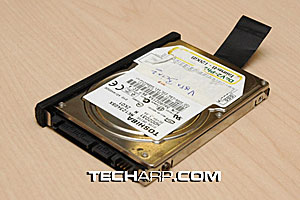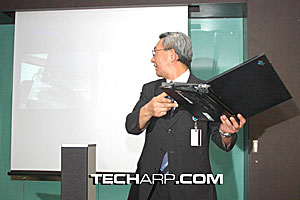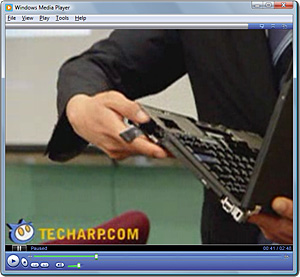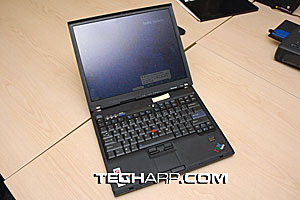Shock Proofing
One of the biggest challenges is shock proofing the notebook. As mobile devices, notebooks are exposed to all kinds of shocks during use. Even when you are using a notebook on a train or in a car, it still has to withstand bumps and vibration.
Most of the notebook is made from solid-state components and will readily handle such abuses. However, the hard drive is really susceptible to damage from such physical "assaults" as it has many moving parts, notably platters that spin at 4200 RPM and higher. So, one of the challenges that Lenovo engineers faced was how to reduce the effect of shocks and vibration on the hard drive.
 |
They started off by directly protecting the hard drive with shock-absorbing rubber liners. When mounted within the chassis, the rubber liners hold the hard drive in place and reduce the strength of shocks and vibration transmitted to the hard drive proper. Even the hard drive cable was intentionally designed to act like a spring, holding the drive in place and damping out the shock and vibration.
Outside the chassis, the ubiquitous rubber feet not only serve to prevent the notebook from moving about on your table or lap, they also help reduce the strength and frequency of the shock and vibration transmitted to the chassis and hard drive. Of course, Lenovo can hardly credit themselves for this "innovation", but it is one of the methods used to reduce the strength of the shocks and vibration the hard drive experiences.
But one technical innovation Lenovo will take credit for is their Active Protection System (APS). It's a combination of hardware sensors and software algorithms that determines when there is an excessive tilting of the notebook, at which point the software will command the hard drive to park its read/write heads. This prevents head crashes in accidental drops.
According to Kobayashi-san, the Lenovo's Active Protection System is a two-dimensional system but that does not mean it is inferior to the 3-axes system used by their competitors. The key, he says, lies in the software algorithm used and that is key advantage of Lenovo's system.
He then dropped the notebook. That gave us a real shock as it was unexpected and the notebook hit the floor real hard. You would have expected the hard drive to literally die from the shock right there and then. In fact, Kobayashi-san himself thought he killed the notebook since it did not respond after the drop.
 |
But when we checked it out later, it was not dead at all. In fact, it was running as if nothing had happened. Perhaps the delayed response was due to the hard drive parking its head during the fall. In any case, everyone was relieved and quite a little surprised that even such a fall did not kill the notebook right away.







 Add to Reddit
Add to Reddit



